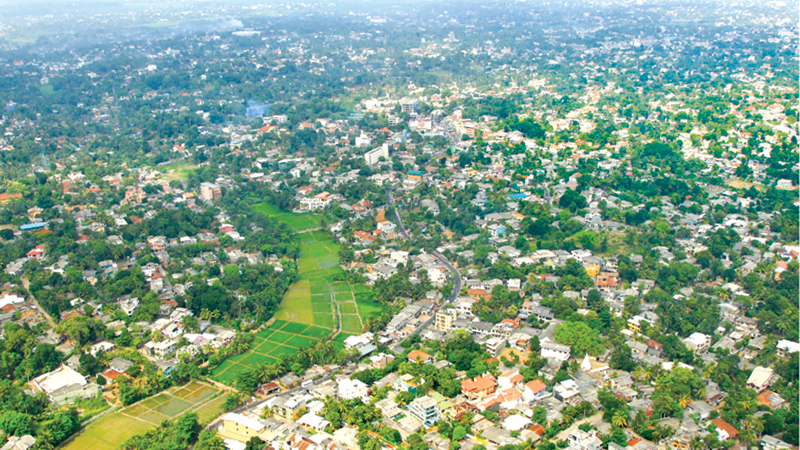-
Kotte now on the global tourism map
The ‘Kingdom of Kotte’ Tourism Trail will be unveiled today.
This is regarded an important milestone for Sri Lanka especially for the historic city of Kotte. ‘Kingdom of Kotte’ is an initiative that is part of a broader vision to develop Kotte as a model destination, showcasing the city’s remarkable blend of heritage, culture, and urban wetland biodiversity.
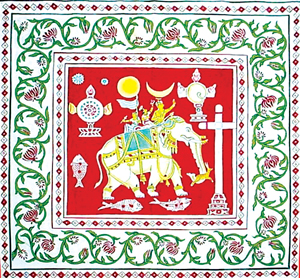
Notable art works of the era.
A flag of the Catholic Karava Sinhalese who became Catholics during Kotte era
Deputy Minister of Industries and Enterprise Development, Chathuranga Abeysinghe, said this initiative in the world’s first wetland capital and the last royal capital of Sri Lanka, Kotte, holds immense potential for eco, cultural, and wellness tourism.
“This marks the beginning of a long-term plan to promote tourism in Kotte, ensuring sustainable development and community upliftment through responsible tourism. “As a representative of the people, I am proud to support this initiative that puts Kotte on the global tourism map and helps preserve our natural and cultural legacy for generations to come,” he said.
This novel initiative is organized by the Kotte Green Tourism Network (KGTN), a community-based organization, in collaboration with the Western Province Tourist Board, he said. “With the right partnerships, active community involvement, and continued government support, this initiative has the power to transform Kotte into a vibrant, eco-conscious tourism model, one that honours Sri Lanka’s proud past while unlocking new opportunities for the future”, he added.
The project implementation is being guided by the Governor of the Western Province.
The “Kingdom of Kotte” Tourism Trail event will feature a symbolic heritage parade, visits to significant cultural and ecological landmarks, engagement of foreign visitors, national leaders, and media, and a showcase of community-driven initiatives and conservation efforts. Sunday Observer Explorer takes you back into the era of the Kotte Kingdom and as facts recorded reveal it had been a very intriguing era indeed, fully worth a recreation of a phase of our very rich heritage for purposes of tourism.
Reflecting back in history Kingdom of Kotte – 1412–1597
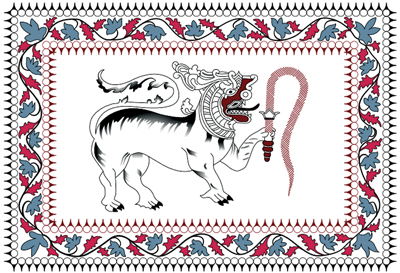
Kingdom of Kotte 1412–1597
Flag of Kotte
The Kingdom of Kotte, romanized: Kōttē Rajadhaniya, named after its capital, Kotte, was a Sinhalese kingdom that flourished in Sri Lanka during the 15th century.
Founded by Parakramabahu VI with the help of the Ming, the Kingdom managed to conquer the Jaffna kingdom and the Vanni principalities, and bring the country under one flag.
It led to a punitive invasion against the Vijayanagar dynasty and captured a port. The Kotte Kingdom was largely dissolved during the Sinhalese-Portuguese War, as it faced attacks from rival Sinhalese kingdoms, the Kingdom of Sitawaka and Kingdom of Kandy.
Dom João Dharmapala handed it over to the Portuguese, thus leading to the formation of Portuguese Ceylon. Kanakasooriya Cinkaiariyan and his two sons also returned from Madurai with mercenaries and managed to conquer Jaffna. The remainder was annexed into Sitawaka and Kandy.
Etymology
The term Kotte is said to have derived from the Sinhalese word kōtta which mean fortress a word come from Tamil / Malayalam kōttai. The word Kotte was introduced by Nissankamalla Alagakkonara, who was the founder of the fortress. They were believed to be from the city of Vanchi, identified with Kanchipuram of Tamil Nadu. The Alagakkonara family have also been identified to be of Tamil ancestry of Vallanattu Chettiar.
Kotte was founded as a fortress by Minister Alakesvara (1370–1385) of the Alagakkonara clan of the Kingdom of Gampola during the reign of Vikramabahu III of Gampola to checkmate invasions from South India on the western coast; Parakramabahu VI later made Kotte his capital city in 1412. It was well protected by the large swamp that surrounded the area.
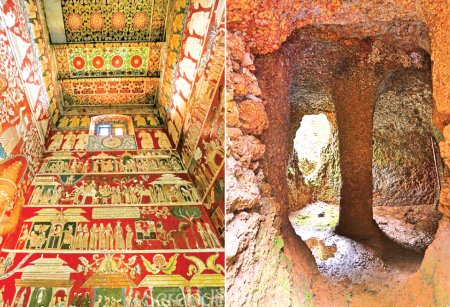 Parakramabahu VI first became the king of Raigama in 1412, then, in 1415, he made Kotte his capital. The King upgraded the existing citadel and built a new royal palace. Parakramabahu VI waited until ties between the Vijayanagara Empire and Jaffna Kingdom were severed. First, he captured the Vanni and made its leaders loyal to him. Prince Sapumal was the commander of the Kotte army at the time. But soon after Kanakasooriya Cinkaiariyan and his two son’s returned from Madurai with mercenaries to wrest the Jaffna Kingdom from Kotte’s over lordship, thus Jaffna kingdom became Independent. Tamil served as one of the court languages of the Kotte Kingdom at this time.
Parakramabahu VI first became the king of Raigama in 1412, then, in 1415, he made Kotte his capital. The King upgraded the existing citadel and built a new royal palace. Parakramabahu VI waited until ties between the Vijayanagara Empire and Jaffna Kingdom were severed. First, he captured the Vanni and made its leaders loyal to him. Prince Sapumal was the commander of the Kotte army at the time. But soon after Kanakasooriya Cinkaiariyan and his two son’s returned from Madurai with mercenaries to wrest the Jaffna Kingdom from Kotte’s over lordship, thus Jaffna kingdom became Independent. Tamil served as one of the court languages of the Kotte Kingdom at this time.
Rise, literature and great poet monks of Kotte era
In 1450, Parakramabahu VI had, with his conquest of the Jaffna kingdom in northern Sri Lanka, unified all of Sri Lanka. At its height, the Kingdom oversaw one of the greatest eras of Sinhalese literature. Royal patronage was given to literature paving way to the golden age of literature in the island. Notable poets at the time were Buddhist monks such as Thotagamuwe Sri Rahula Thera, Weedagama Maithree thero, and Karagala Wanarathana thero.
Buddhist education institutions started in the era -;
• Padmawthi Piriwena, Karagala
• Vijayaba Piriwena,Thotagamuwa
• Sunethradevi Piriwena, Papiliyana
• Siri Perakumba Pirivena, Ethul Kotte
These institutions paved way not only to the enhancement of Buddhist literature but also to the development of Ayurvedic medicine. Aryvedic medical books written in Kotte era -; Waidya Chinthamani and Yoga Rathnakaraya.
Some pictures courtesy Ceylon Independent
Religion
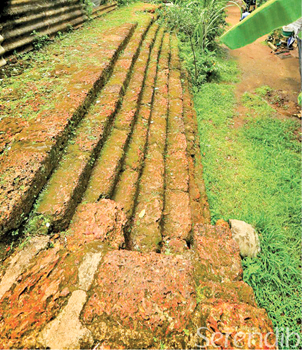 Buddhism was the state religion for most of its existence. Parakramabahu VI built a shrine for the Sacred Tooth Relic near the royal palace. Kotte Raja Maha Viharaya was also enshrined by Parakramabahu VI to celebrate the Esala Perahara Pegent, in Honor of the Sacred Tooth relic.
Buddhism was the state religion for most of its existence. Parakramabahu VI built a shrine for the Sacred Tooth Relic near the royal palace. Kotte Raja Maha Viharaya was also enshrined by Parakramabahu VI to celebrate the Esala Perahara Pegent, in Honor of the Sacred Tooth relic.
The Portuguese converted much of the population into the Roman Catholic faith. The last king of Kotte, Don Juan Dharmapala, was one of two Catholic Sinhalese monarchs in Sri Lankan history (the other was Kusumasena Devi), though several other contemporary kings had also been temporarily Catholic.
Baththotamulla
Battaramulla was a village that provided rice to the king’s palace. The royal flower gardens were also located in this village in an area called Rajamalwatta.
Even unto today, the name ‘Rajamalwatte’ is prevalent amongst the names of the Kotte Roads.
By 1477, however, 10 years after the death of Parakramabahu VI, regional kingdoms became more powerful. Most notably a new Kingdom was founded in the central hill-country of the island by Senasammata Vikramabahu who successfully led a rebellion against the Kotte Kingdom in 1469.
Rule from Kelaniya
Parakramabahu IX of Kotte moved the capital to Kelaniya in 1509 and it stayed there until 1528.
Arrival of the Portuguese
The Kotte kingdom was situated near Colombo, a very important port at the time. Moorish merchants from India and Arabia dominated the trade of the kingdom until the arrival of the Portuguese. The spice trade, e.g. in cinnamon, cardamom, black pepper, dominated the exports while gemstones also was a big export. After the conquest of Jaffna, Kotte possessed the pearl trading which gave an enormous wealth to the kingdom. Portuguese who arrived as traders were able to secure a trading deal with the kingdom on their first visit.
The Portuguese arrived in Sri Lanka in 1505, landing in Galle Harbour. Once they learnt that they had arrived in Sri Lanka, they sailed to Colombo. They were taken by a tortuous route to the capital, Kotte, which was actually quite close by.
This was done in order to create the impression that the kingdom was too far inland to make invasion from the harbour feasible. This plan was, however, spoilt by the fact that the Portuguese who remained with the ship fired the ship’s cannon repeatedly, which sound was heard by the Portuguese party being taken to Kotte. This incident gave rise to the local saying “Parangiya Kotte Giya Vage” (“like the Portuguese went to Kotte”), which refers to doing something or going somewhere in a roundabout route instead of a direct route. However, during this meeting, the Portuguese managed to secure a trade agreement with the Kotte king.
Demise
Kotte Kingdom’s downfall began with an event in 1521 that became known as the “Wijayaba Kollaya”. The Kotte King Vijayabahu VII’s three sons mutinied and killed their father dividing the kingdom among themselves. This gave rise to three minor kingdoms, Kotte, Sitawaka and Principality of Raigama.
The divided Kingdom of Sitawaka became more powerful with local popular support and the Kotte Kingdom had to rely on Portuguese for help. The king of Kotte after Wijayabe Kollaya, Buvenekabahu VII, got assistance from the Portuguese in order to defeat his brother, Mayadunne.
He also allowed his daughter’s son, Prince Dharmapala, to be baptized as a Catholic by the Portuguese. After Buvenekabahu had named Dharmapala as his heir, he was shot – supposedly by accident – by a Portuguese soldier.
In 1565, the capital of Kotte was abandoned by Dharmapala of Kotte due to frequent attacks from the Kingdom of Sitawaka led by Mayadunne and his son Rajasinghe I; he was taken into Colombo under Portuguese protection. Most of the areas of Kotte Kingdom were annexed to the Kingdom of Sitawaka however after the downfall of Sitawaka in 1594, these areas were re-annexed to the Kotte kingdom. In 1597 Dharmapala gifted the Kotte Kingdom to the Portuguese throne and the Kotte era was officially ended.
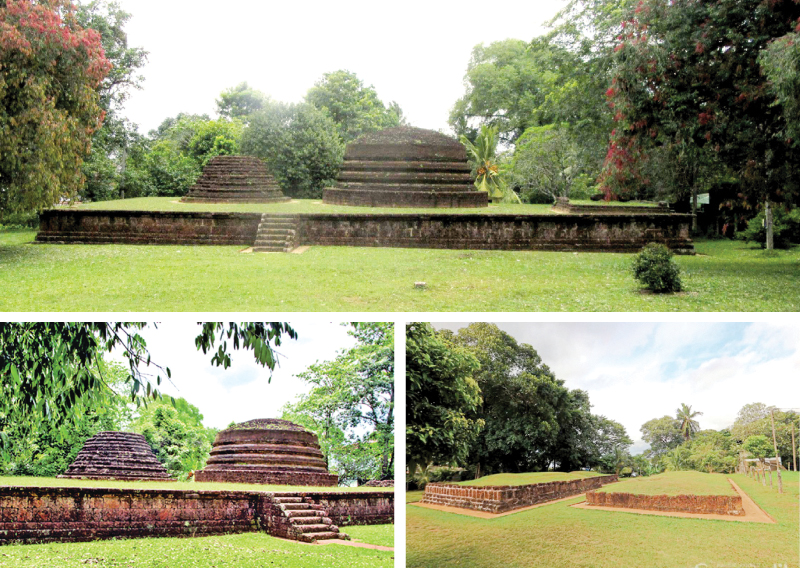
Military
The military of the Kotte kingdom was closely associated with both its rise and demise. Poems written in this era give vivid accounts of the contemporary military. In the final periods of the kingdom, the Portuguese were often in charge of the military.
Notable commanders of Kotte army
Alagakkonara, Parakramabahu VI of Kotte, Manikka Taleivar, Bhuvanekabahu VI, known also as Sapumal Kumaraya or Chempaka Perumal, Veediya Bandara, Prince of Ambulugala, Samarakone Rala
Significant military victories of Kingdom of Kotte
• Capture of Jaffna in 1450
• Capture of Vanni, making its chieftains tribute-paying subordinates
• Successfully subsidising a rebellion in central hills started by Jothiya Situ.
• Invading a port of the Vijayanagar Empire as retaliation to looting a ship belonging to Kotte by the rayan of Adhiramapattanam.








